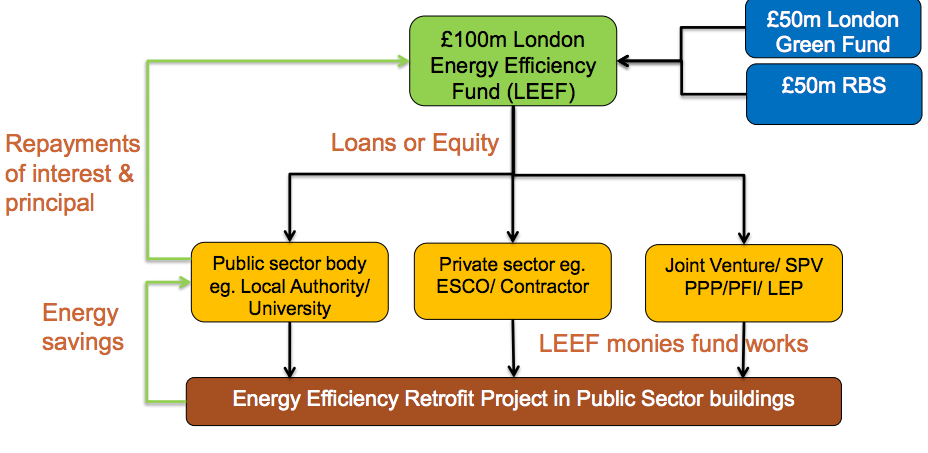June 2013: A recent question to the Mayor helped highlight the first investment made by the London Energy Efficiency Fund. LEEF was established in November 2011 and has £100m to invest in energy efficiency retrofit to public sector-owned / occupied buildings, and has to be fully invested by December 2015.
The fund is a sub-set of the London Green Fund which is itself made up of £50 million from the European Regional Development Fund (ERDF), £32 million from the London Development Agency (LDA), and £18 million from the London Waste and Recycling Board (LWARB). The European Investment Bank manages the London Green Fund on behalf of the GLA and LWARB. Of the £100 million, £50 million has been allocated to an LEEF which has been match-funded with a further £50m by the Royal Bank of Scotland (RBS). An outline of how the fund operates is set out below.
 The Mayor responded to a recent question to state that “Over the past year, the London Energy Efficiency Fund has invested £19.8m in the Tate Modern project that includes a range of innovative energy saving measures, including waste heat recovery from a substation. A number of other projects are currently being considered but are yet to be approved for funding.”
The Mayor responded to a recent question to state that “Over the past year, the London Energy Efficiency Fund has invested £19.8m in the Tate Modern project that includes a range of innovative energy saving measures, including waste heat recovery from a substation. A number of other projects are currently being considered but are yet to be approved for funding.”
The Tate Modern project is the new extension planned for the Bankside gallery – details here – which incorporates a number of innovative energy measures including that it “will draw much of its energy needs from heat emitted by EDF’s transformers in the adjoining operational switch house. With a high thermal mass, frequent use of natural ventilation, and utilisation of daylight, the new building will use 54% less energy and generate 44% less carbon than current building regulations demand.”
Further information is set out in the environmental statement published as part of the Tate’s planning application for the extension here.

